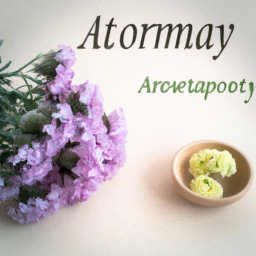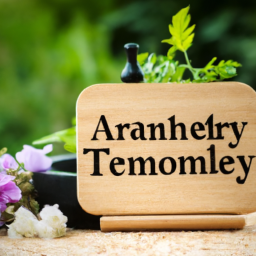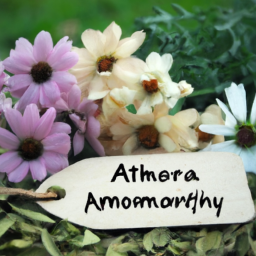
Have you ever walked through a garden and been instantly transported to a state of relaxation and calm? Aromatherapy gardens are designed to do just that – provide a sanctuary where you can unwind and rejuvenate your senses through the power of scents. In this blog post, we will explore the concept of aromatherapy gardens and how they can help you achieve relaxation through the use of soothing fragrances. So, grab a cup of tea, sit back, and let’s dive into the world of aromatherapy gardens: relaxation through scents.
The Benefits of Aromatherapy Gardens: Enhancing Relaxation through Scents
Welcome to the world of aromatherapy gardens, where relaxation and tranquility await you amidst the enchanting scents of nature. In this guide, we will explore the numerous benefits of creating your own aromatherapy garden and how it can enhance your overall well-being. So, let’s dive in and discover the wonders of relaxation through scents!
Creating Your Aromatherapy Garden
1. Choose the Perfect Location:
When planning your aromatherapy garden, it is crucial to select a location that receives ample sunlight and has good drainage. Most aromatic plants thrive in full sun, so find a spot in your garden that meets these requirements. Additionally, consider the accessibility of the garden, ensuring it is easily accessible for you to enjoy its therapeutic benefits.
2. Select the Right Plants:
Now comes the exciting part – selecting the plants that will fill your garden with delightful scents. Lavender, rosemary, chamomile, jasmine, and peppermint are just a few examples of aromatic plants that are known for their relaxation-inducing properties. Research each plant’s specific care requirements and choose ones that suit your climate and personal preferences.
3. Design the Layout:
Creating an aesthetically pleasing layout for your aromatherapy garden is essential for maximizing its relaxation potential. Consider incorporating pathways, seating areas, and water features to enhance the overall ambiance. Experiment with different arrangements and designs to find what resonates with you and creates a sense of tranquility.
The Benefits of Aromatherapy Gardens
1. Stress Relief:
One of the primary benefits of aromatherapy gardens is their ability to provide stress relief. The soothing scents of aromatic plants trigger the release of endorphins, the body’s natural “feel-good” chemicals, promoting a sense of calm and relaxation. Spending time in your aromatherapy garden can help alleviate anxiety and reduce the negative effects of stress on your overall well-being.
2. Improved Sleep:
If you struggle with sleep-related issues, an aromatherapy garden can be your secret to a restful night’s sleep. Certain scents, such as lavender, have been shown to have sedative effects, helping you fall asleep faster and improving the quality of your sleep. Incorporating these plants into your garden and breathing in their soothing fragrances before bedtime can promote a more peaceful and rejuvenating sleep.
3. Enhanced Mood and Mental Well-being:
The power of scents extends beyond relaxation; they can also have a profound impact on your mood and mental well-being. Aromatherapy gardens provide a natural and pleasant way to uplift your spirits, reduce feelings of sadness or depression, and boost overall mental clarity. The delightful fragrances can stimulate the release of serotonin and dopamine, neurotransmitters responsible for happiness and pleasure.
How to Maximize the Benefits
1. Engage Your Senses:
When spending time in your aromatherapy garden, make a conscious effort to engage all your senses. Close your eyes and take deep breaths, allowing the scents to envelop you. Listen to the sounds of nature, whether it’s the gentle rustling of leaves or the chirping of birds. Touch the plants and feel their textures. By fully immersing yourself in the sensory experience, you can amplify the relaxation and therapeutic effects.
2. Practice Mindfulness and Meditation:
Combine the power of aromatherapy with mindfulness and meditation techniques to deepen your relaxation experience. Find a comfortable spot in your garden, sit or lie down, and focus on your breath. Allow the scents to guide your thoughts and bring you into a state of calm and present awareness. This integration of aromatherapy with mindfulness can enhance the overall benefits and create a profound sense of tranquility.
3. Harvest and Utilize the Plants:
As your aromatic plants flourish, don’t hesitate to harvest and utilize them to enjoy their benefits even when you’re not in the garden. Dry the leaves or flowers to make sachets or potpourri, create essential oils for diffusers or massage, or infuse them into homemade bath products. By incorporating these scents into your daily life, you can extend the relaxation and therapeutic effects beyond the boundaries of your garden.
Creating an aromatherapy garden is a delightful journey that can significantly enhance your relaxation and well-being. By carefully selecting the right plants, designing an inviting layout, and immersing yourself in the sensory experience, you can create a haven of tranquility right in your own backyard. So, embrace the power of scents and embark on this aromatic adventure today!

Creating Your Own Aromatherapy Garden: Essential Plants and Design Tips
Welcome to the world of aromatherapy gardens, where scents and relaxation go hand in hand. In this guide, we will explore the essential plants and design tips to help you create your very own aromatic oasis. Whether you have a spacious backyard or a small balcony, you can transform any space into a soothing haven that engages your senses and promotes tranquility. So, let’s dive in and discover the secrets to creating an enchanting aromatherapy garden!
Choosing the Right Plants
The key to a successful aromatherapy garden lies in selecting the right plants that emit captivating scents. Here are some essential plants to consider:
1. Lavender: Known for its calming properties, lavender is a must-have in any aromatherapy garden. Its sweet, floral fragrance can help reduce stress and promote better sleep.
2. Rosemary: Not only does rosemary add a delightful aroma to your garden, but it also has therapeutic benefits. Its scent can improve concentration and memory, making it an excellent addition to your outdoor workspace.
3. Jasmine: If you’re looking for a romantic touch, jasmine is the perfect choice. Its intoxicating fragrance can evoke feelings of happiness and relaxation, making it ideal for creating a serene atmosphere.
4. Peppermint: Known for its invigorating scent, peppermint can provide a refreshing and energizing experience. Its aroma can help alleviate headaches and improve focus, making it a great addition to your garden.
5. Lemon Balm: With its lemony scent, lemon balm can uplift your mood and relieve stress. It also attracts pollinators, adding a touch of vibrancy to your garden.
Designing Your Aromatherapy Garden
Now that you have an idea of the plants to include, let’s explore some design tips to create a visually appealing and relaxing aromatherapy garden.
1. Consider the layout: Start by assessing the available space and envisioning how you want your garden to look. Whether you prefer a formal arrangement or a more naturalistic design, plan the layout accordingly.
2. Create focal points: Incorporate eye-catching elements such as a fountain, sculpture, or a beautifully designed bench to draw attention and create a sense of tranquility.
3. Choose complementary colors: Select plants with flowers and foliage that complement each other. Harmonizing colors can enhance the visual appeal of your garden and create a soothing atmosphere.
4. Incorporate different heights: Varying the height of your plants adds depth and interest to your garden. Consider using trellises, hanging baskets, or raised beds to create layers and make the space visually dynamic.
5. Provide seating areas: Include comfortable seating areas where you can relax and enjoy the scents and sights of your garden. It could be a cozy bench, a hammock, or even a swing, depending on the available space.
6. Don’t forget about pathways: Create meandering pathways that invite exploration. Use materials such as gravel, stepping stones, or wood chips to guide visitors through your aromatic oasis.
7. Consider lighting: Install outdoor lighting to extend the enjoyment of your garden into the evening. Soft, warm lights can create a magical ambiance and allow you to appreciate the scents even after the sun sets.
Maintaining Your Aromatherapy Garden
Now that your aromatherapy garden is complete, it’s important to maintain it to ensure its longevity and continued relaxation. Here are some tips to keep your garden in top shape:
1. Watering: Different plants have varying water requirements, so make sure to water them accordingly. Check the moisture level of the soil regularly and adjust your watering schedule as needed.
2. Pruning: Regularly prune your plants to maintain their shape and prevent overcrowding. Remove any dead or diseased branches to promote healthy growth and prevent the spread of pests or diseases.
3. Weeding: Keep your garden free from weeds that can compete with your plants for nutrients and water. Regularly remove any unwanted vegetation to ensure the well-being of your aromatic plants.
4. Fertilizing: Feed your plants with organic fertilizers to provide them with the necessary nutrients. Follow the instructions on the fertilizer packaging and avoid over-fertilizing, as it can harm your plants.
5. Pest control: Monitor your garden for pests and take appropriate measures to control them. Use natural pest control methods whenever possible to avoid harmful chemicals that may affect the fragrance and overall health of your plants.
Now that you have all the essential information, it’s time to embark on your journey of creating an aromatherapy garden. Remember, the key is to choose the right plants, design a visually appealing space, and maintain it with care. So go ahead, unleash your creativity, and let the scents of nature transport you to a world of relaxation and serenity!

Aromatherapy Gardens: Relaxation through Scents
Incorporating Aromatherapy into Your Outdoor Space: Transforming Your Garden into a Relaxing Oasis
Welcome to the world of aromatherapy gardens, where scents and nature come together to create a blissful and relaxing oasis right in your own backyard. In this guide, we will explore how you can transform your garden into a space that promotes relaxation, rejuvenation, and overall well-being through the power of scents.
1. Choosing the Right Plants
The first step in creating an aromatherapy garden is to carefully select the right plants that will provide the desired scents and therapeutic benefits. Here are a few popular options to consider:
Lavender: Known for its calming properties, lavender is a must-have in any aromatherapy garden. Its sweet and floral scent helps reduce stress and anxiety, promoting relaxation and better sleep.
Rosemary: With its invigorating and refreshing aroma, rosemary is an excellent choice for enhancing mental clarity and focus. It also has natural insect-repellent properties, making it a practical addition to your outdoor space.
Jasmine: The intoxicating scent of jasmine is known for its mood-lifting and aphrodisiac qualities. Incorporating jasmine in your garden will create a romantic and tranquil atmosphere.
These are just a few examples, and there are numerous other plants to explore based on your personal preferences and desired therapeutic effects.
When choosing plants, consider their growth requirements, such as sunlight, soil type, and water needs. Ensure that your garden provides the ideal conditions for each plant to thrive and release their aromatic scents.
2. Designing Your Aromatherapy Garden
Once you have selected the plants for your aromatherapy garden, it’s time to design the layout and create a space that invites relaxation and tranquility. Here are some key considerations:
Zoning: Divide your garden into different zones based on the scents and therapeutic benefits you want to experience. For example, you can have a meditation zone with calming scents like lavender, and a focus zone with invigorating scents like rosemary.
Pathways: Create winding pathways that lead you through your garden, allowing you to fully immerse yourself in the scents and beauty of nature. Use natural materials like gravel or stepping stones to maintain a harmonious and organic feel.
Seating Areas: Incorporate comfortable seating areas where you can relax, unwind, and fully enjoy the aromatherapy experience. Consider adding cozy benches, hammocks, or even a small gazebo for a touch of luxury.
Remember to also consider the overall aesthetics of your garden by choosing complementary colors, textures, and heights of plants. This will create a visually pleasing environment that enhances the overall sensory experience.
3. Maintaining Your Aromatherapy Garden
Now that you have created your aromatherapy garden, it’s important to maintain it properly to ensure the longevity and health of your plants. Here are some essential maintenance tips:
Watering: Different plants have different water requirements, so make sure to water them accordingly. Avoid overwatering or underwatering, as it can lead to stress and damage to the plants.
Pruning: Regularly prune your plants to promote healthy growth and maintain their desired shape. Remove any dead or diseased branches to prevent the spread of pests or diseases.
Fertilizing: Use organic fertilizers to provide essential nutrients to your plants. Follow the recommended dosage and frequency based on the specific needs of each plant.
Weeding: Keep your garden free from weeds that can compete with your plants for resources. Regularly remove any unwanted plants to maintain a clean and well-maintained space.
By following these maintenance practices, you will ensure that your aromatherapy garden remains vibrant, fragrant, and a source of relaxation for years to come.
Creating an aromatherapy garden is a wonderful way to bring the benefits of scents and nature into your outdoor space. Whether you have a small balcony or a spacious backyard, you can transform it into a relaxing oasis that promotes well-being and rejuvenation. So, roll up your sleeves, get your hands dirty, and embark on this aromatic journey to create your own personal sanctuary.
Here’s the Summary Snapshot
Aromatherapy gardens offer a delightful way to unwind and find relaxation through the power of scents. Imagine strolling through a garden filled with fragrant flowers and herbs, their soothing aromas enveloping you in a sense of calm and tranquility. These gardens are carefully designed to incorporate plants known for their therapeutic properties, creating a sensory experience that can uplift your mood and promote overall well-being.
The scents emitted by these plants have a direct impact on our emotions and can help alleviate stress, anxiety, and even insomnia. Lavender, for example, is renowned for its calming properties and is often used in aromatherapy to promote relaxation and sleep. Similarly, rosemary has a refreshing scent that can boost concentration and mental clarity. By cultivating an aromatherapy garden, you can easily access these natural remedies whenever you need them, simply by inhaling the fragrances or using the plants for essential oil extraction. Whether you have a small balcony or a spacious backyard, creating an aromatherapy garden is a wonderful way to incorporate nature’s healing powers into your daily life.
Here are the top questions that we were asked:
Q1: What is an aromatherapy garden?
A1: An aromatherapy garden is a specially designed garden that features a variety of plants and flowers known for their pleasant scents. These gardens are specifically created to promote relaxation and well-being through the use of aromatic plants.
Q2: What are the benefits of an aromatherapy garden?
A2: Aromatherapy gardens offer numerous benefits. The scents emitted by the plants can help reduce stress, anxiety, and promote relaxation. They can also improve mood, enhance sleep quality, and even boost the immune system. Additionally, spending time in an aromatherapy garden can provide a peaceful and rejuvenating experience.
Q3: Which plants are commonly found in an aromatherapy garden?
A3: Aromatherapy gardens typically include a variety of plants known for their aromatic properties. Common examples include lavender, rosemary, chamomile, jasmine, eucalyptus, lemon balm, and peppermint. These plants are chosen for their soothing scents and therapeutic benefits.
Q4: How can I create an aromatherapy garden?
A4: Creating an aromatherapy garden is relatively simple. Start by selecting plants that emit scents you find pleasant and relaxing. Consider the climate and soil conditions in your area to ensure the plants will thrive. Plant them in a designated area or in containers if you have limited space. Regularly maintain and care for the plants by watering, pruning, and fertilizing as needed. Finally, create a cozy seating area where you can relax and enjoy the scents.
Q5: Can I use the plants from my aromatherapy garden for other purposes?
A5: Absolutely! Many of the plants commonly found in aromatherapy gardens have additional uses. For example, lavender can be used to make essential oils, sachets, or even homemade soaps. Rosemary can be used in cooking, and chamomile can be brewed into a soothing tea. Feel free to explore the various ways you can utilize the plants from your aromatherapy garden to enhance your well-being and daily life.
Dr. Olivia Green is a botanist with over two decades of experience in indoor plant cultivation. She holds a Ph.D. in Plant Biology and has dedicated her career to researching plant behavior in controlled environments. Dr. Green is passionate about helping plant enthusiasts master the art of indoor gardening through her extensive knowledge and practical insights.


